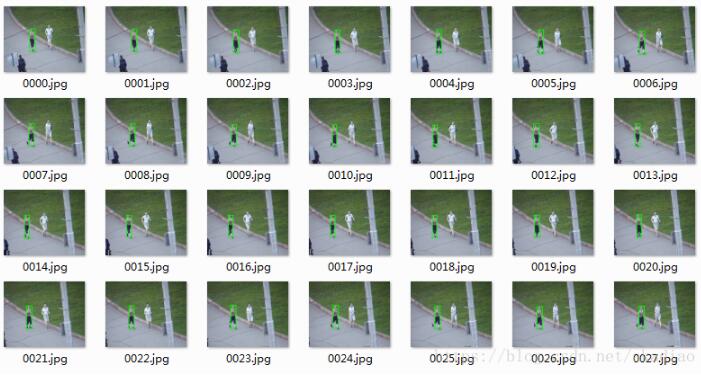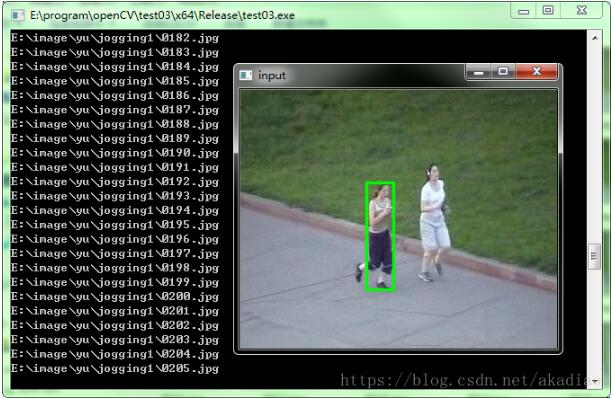现有一些图片按顺序放置在一文件夹jogging1\下,如图: 需要将其合并转换为一个视频。 示例: 环境:Win7+OpenCV3+VS2012 #includeopencv2/opencv.hpp#include stdio.h#include io.h#include string#include iostre
现有一些图片按顺序放置在一文件夹jogging1\下,如图:

需要将其合并转换为一个视频。
示例:
环境:Win7+OpenCV3+VS2012
#include<opencv2/opencv.hpp>
#include <stdio.h>
#include <io.h>
#include <string>
#include <iostream>
#include <fstream>
using namespace std;
using namespace cv;
int main()
{
_finddata_t FileInfo;
//读取图片所在的路径
string inPath = "E:\\image\\yu\\jogging1\\";
string strfind = inPath + "*";
long Handle = _findfirst(strfind.c_str(), &FileInfo);
char filename[300];
Mat src;
if (Handle == -1L)
{
cerr << "can not match the folder path" << endl;
exit(-1);
}
Mat frame;
Mat src0 = imread("E:/image/yu/jogging1/0000.jpg");
Size size = src0.size();
VideoWriter writer;
writer.open("jogging.avi", CV_FOURCC('M', 'J', 'P', 'G'), 25, size, true);
do{
//判断是否有子目录
if (FileInfo.attrib & _A_SUBDIR)
{
if ((strcmp(FileInfo.name, ".") != 0) && (strcmp(FileInfo.name, "..") != 0))
{
inPath += FileInfo.name;
cout <<inPath<<endl;
}
}
else
{
cout <<inPath<<FileInfo.name<<endl;
//读取图片所在的路径
string path = "E:/image/yu/jogging1/" + (string)FileInfo.name;
src = imread(path);
imshow("input", src);
writer.write(src);
waitKey(1);
}
} while (_findnext(Handle, &FileInfo) == 0);
_findclose(Handle);
return 0;
}

以上这篇opencv3/C++ 将图片转换为视频的实例就是小编分享给大家的全部内容了,希望能给大家一个参考,也希望大家多多支持自由互联。
